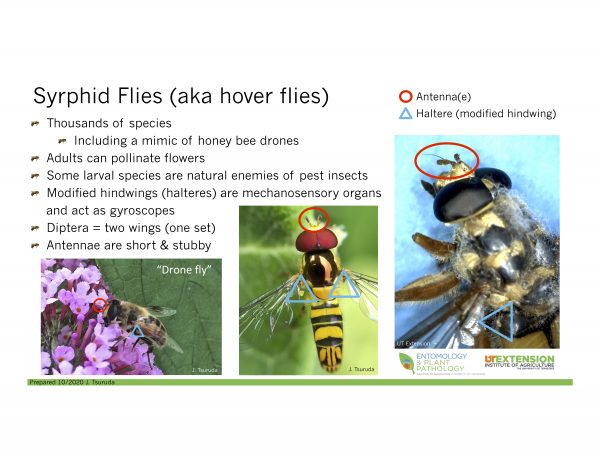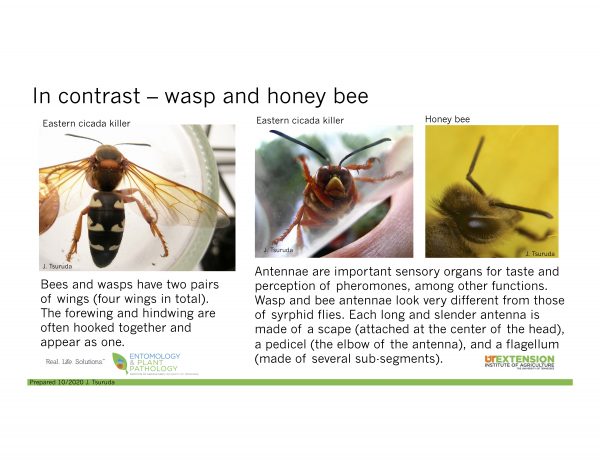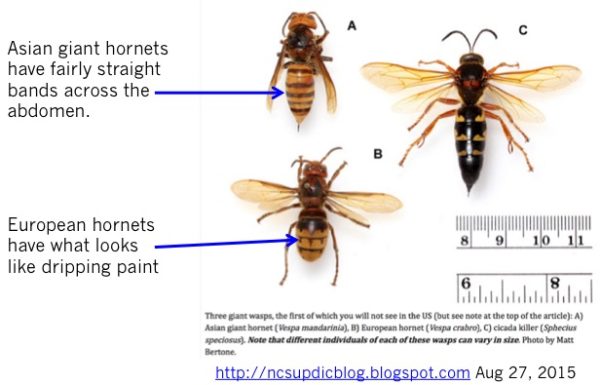At Home Beekeeping Webinar
UT Apiculture is proud to collaborate with other universities to offer a free online beekeeping series. We understand the importance of prioritizing safety and convenience, which is why we’re offering this opportunity for bee clubs and beekeepers worldwide to engage in virtual learning from the comfort of their homes. Please note that while this series is an excellent educational resource, it does not qualify for TAEP.
If Zoom registration is full, you can still watch via the Lawrence County Extension Facebook page (no registration needed – just go to the site a few minutes before 6:30 pm Central Time)! Presentations will also be posted on the Facebook site for 2 weeks in case you missed it live or want to watch the presentation again. Please do not take screenshots or copy any slides.
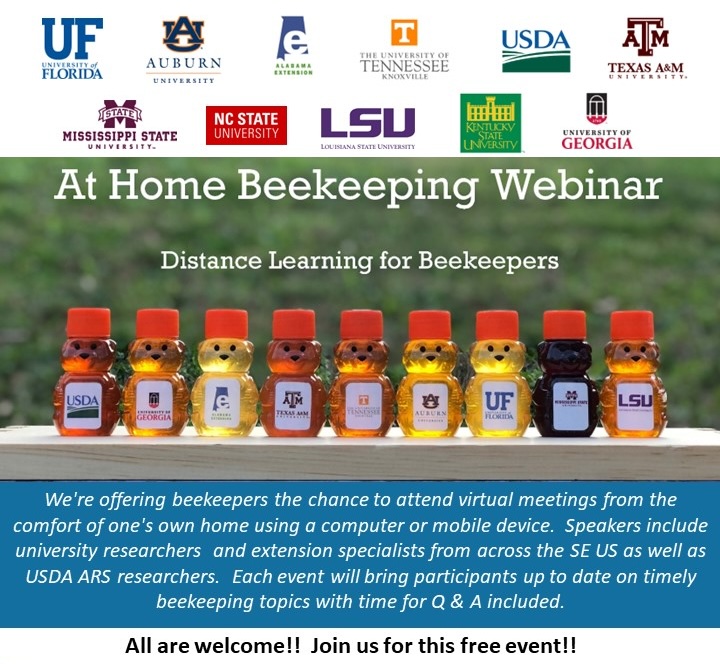
How to Help & Protect Pollinators
POLLINATOR HABITATS
To establish and maintain a habitat for pollinators, create diverse and clustered plantings that are appropriate for your region. Check out the Pollinator Partnership’s Ecoregional Planting Guides for ideas. In Tennessee, you can find inspiration and educational programming at UT Gardens in Knoxville, Crossville, and Jackson. Regular visits will help you fully appreciate diverse landscapes and the beneficial insects they support! At the UT Gardens in Knoxville, look out for plant tags highlighting species particularly attractive to pollinators.
POLLINATOR SAFETY
keeper, farmer, or pesticide applicator, you can play a vital role in preventing accidental bee kills due to pesticides. Even homeowners can help by spreading the word about this program!
Tennessee participates in FieldWatch, a multi-state program that supports communication, collaboration, and cooperation between stakeholders who use or are affected by pesticides. Explore the FieldWatch website for valuable resources, including instructional videos on how to use this voluntary system. The Tennessee Department of Agriculture offers cost-free access to this program for stakeholders in the state.


Beekeepers can register on the beecheck website (one of the programs of FieldWatch). Note that this is a separate and voluntary registry from the mandatory TDA apiary registry. You are not automatically enrolled when you register your apiary with TDA. Registering for beecheck using the same email address as your TDA apiary registration will expedite the cross-checking process for acceptance.
Nothern Giant Hornets (Vespa mandarinia)
Please see the WA State Dept of Ag’s website for previous updates and more information on the individuals and nest found near the Canadian border.
Anyone who believes they have seen a northern giant hornet (renamed from Asian giant hornet) is encouraged to email photos to their local Extension agriculture and natural resources agent for identification through UT’s Distance Diagnostics program. So far, NO SUBMISSIONShave been confirmed as northern giant hornets – almost all submissions have been identified as European hornets, yellowjackets, or eastern cicada killers. However, we want to be sure we do not have any northern giant hornets in the area so if you are still unsure after consulting the photos in the links, please email your photos to your Extension office (see below) for identification.
Many insects in TN show a resemblance to these hornets. Please see these placards to see some of the visual features of syrphid flies compared to cicada killer wasps and bees – many of these flies are beneficial insects so please refrain from killing them. NCSU’s Plant Disease and Insect Clinic has a post with great photos but please note that each species can vary in size so it is helpful to look at the coloration and markings on the abdomen.
Swarm Season
Honey bee colonies reproduce by dividing and swarming. Generally, around 40-75% of the adult bee population and the old queen leave and find a temporary site (often times a tree branch), where they will hang out while some individual bees go scouting for permanent nesting sites. A collective decision is made and the swarm takes flight for the permanent location, where the colony will be established. If you are a homeowner, who sees a cluster of bees, please contact your local beekeeping association to have a local beekeeper collect the swarm. Many of the local beekeeping associations have a swarm catcher list on their websites. You can also try contacting your county Extension office. It is always helpful if you have photos (to confirm they are actually honey bees and not yellowjackets, paper wasps, or another type of stinging insect) and have exact location information.
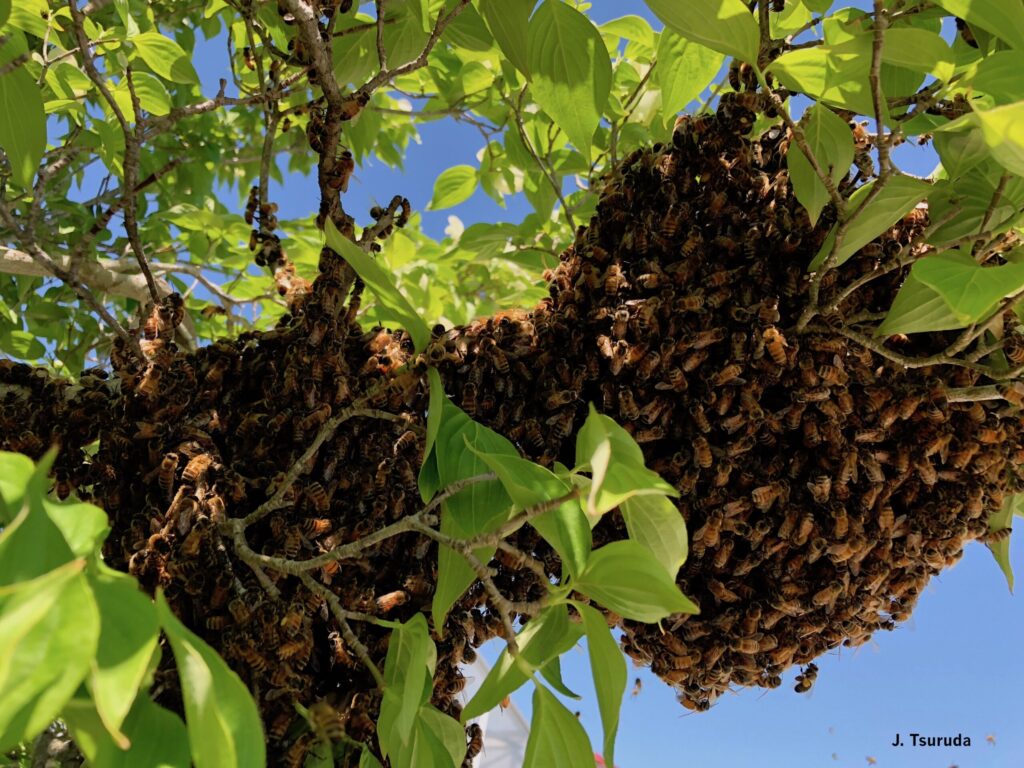
Yellow-Legged Hornets
*Update: The Georgia Department of Agriculture found and destroyed a nest of yellow-legged hornets in the area of Savannah, GA – great work: GA Dept of Ag Press Release.
A new, non-native hornet was detected in GA recently, the yellow-legged hornet, Vespa velutina. Read GA’s Dept of Ag post about the August 9th find by a GA beekeeper near the port of Savannah: https://agr.georgia.gov/pr/discovery-yellow-legged-hornet-confirmed-georgia-first-time
In its natural habitat in Asia, the yellow-legged hornet makes large, paper nests in trees or the eaves of structures. Their biology is similar to that of other hornets and wasps so the best distinguishing characteristics for identification are based on physical attributes of the insect itself. Many wasps/hornets have some of these features, so the combination of these characteristics is worth noting. While the bases of the legs are dark, the ends are yellow or pale. The thorax and head are dark in color, but the front of its “face” is yellow. The abdomen is dark on the anterior end, and becomes more yellow near the posterior tip; sometimes with thin yellow stripes. If you have a specimen or can take a high-quality, close-up photo, you can also look for a distinguishing wide, yellow band/stripe on the 4th abdominal segment – 4th from the anterior (head) end, not from the tip/rear end of the abdomen.
At this time there is no evidence that this hornet is in TN. Given the potential for this hornet to spread and its impact on pollinators and beekeeping, we want beekeepers and citizens to be vigilant but to also check out the resources to look for the distinguishing characteristics before submitting reports, photos, and specimens to their county Extension agents. Before submitting an identification request, please read this post from UGA’s bee lab that has photos and tips for beekeepers: UGA Bee Lab Post.
Most of the submissions we have received have been European hornets, which are common this time of year. While they can also have yellow on their legs, they can be ruled out based on size and the markings on the abdomen (that look like dripping paint). Another lookalike this time of year is the Eastern cicada killer, but again, it is larger and has distinct abdominal markings. Take a look at our previous post that shows the markings of European hornets, Eastern cicada killers, and Northern giant hornets: EPP Facebook Post.
